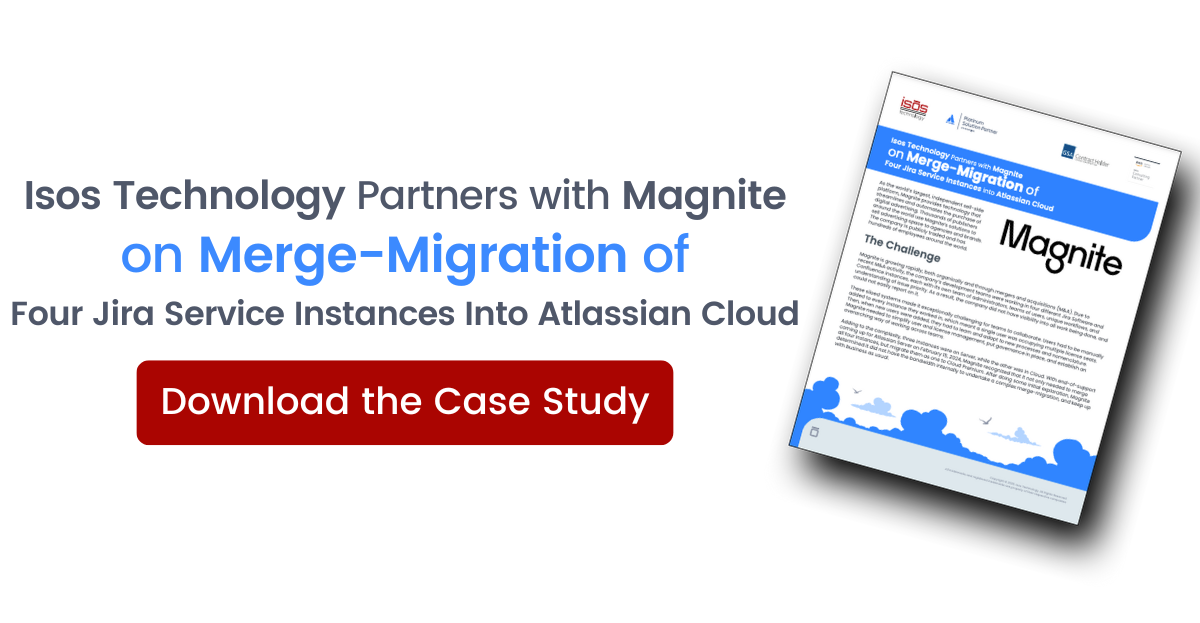 HIPAA compliance is now available in the Atlassian Enterprise Cloud for Jira and Confluence. For mobile health app and software developers, organizations running clinical trials, or any organization operating in or adjacent to the healthcare space, there’s never been a better time to plan a move to the cloud.
HIPAA compliance is now available in the Atlassian Enterprise Cloud for Jira and Confluence. For mobile health app and software developers, organizations running clinical trials, or any organization operating in or adjacent to the healthcare space, there’s never been a better time to plan a move to the cloud.
It's well established that migrating to Atlassian Cloud can offer scalability and flexibility not possible with on-premises solutions. It also provides long-term savings by reducing the cost of servers and hardware. That’s why 90% of new users are choosing cloud-hosted Atlassian applications and finding a 155% average ROI. Best of all, the cloud can make it easier to limit and control access to privileged information using industry best practices like role-based, gated availability centered on a strong identity security and access management system.
With the Atlassian Cloud becoming HIPAA-compliant, it expands the opportunities for healthcare organizations and companies to launch cloud deployments of products like Jira and Confluence—products that already have a proven on-premises record of managing the complexities of healthcare. Here are just a few examples of how these Atlassian products have been used to further the mission of healthcare organizations.
1. Tracking of clinical trials
Single drug clinical trials are complex enough with requirements around recording, scheduling, and reporting. Running a multi-drug trial only compounds that complexity.
So when Washington University’s Dominantly Inherited Alzheimer Disease (DIAD) Network launched the world’s first prevention trial for at-risk families with DIAD, focusing on two investigational drugs, they ran into roadblocks. Established clinical trial software systems didn’t fully meet their needs, difficult to customize, and were cost prohibitive. Spreadsheets didn’t provide the workflow or concurrent access they required, and custom software had significant costs both upfront and with regular maintenance.
The team found their solution in Jira. It allowed them to coordinate hundreds of people and events around the world, provided full visibility into past, current, and upcoming events, and established processes and workflows.
Similarly, team members at Labcorp Drug Development (formerly Covance) turned to Jira as the system to track, manage, and report on all risks and issues encountered during a clinical trial. In a paper published in JAMIA Open, they reported that because Jira preserved the linkage between risks, issues, actions, decisions, and outcomes, the system allowed study teams to assess the impact and effectiveness of their risk management strategies and present a coherent account of how the trial was conducted.
“Since the tool was put in production, we have observed an increase in the number of reported issues and a decrease in the median issue resolution time which, along with the positive user feedback, point to marked improvements in quality, transparency, productivity, and teamwork,” the Labcorp team wrote.
2. Developing mobile health apps and software for medical devices
BfB Labs develops therapeutic mobile games to help youth with mental health issues. The two games and data tracking apps the company has developed are each classified as medical devices. To meet the corresponding medical device regulations and manage development of their applications, BfB turned to Jira and Confluence Cloud—the former for product development and project management, and the latter for their documentation workspace.
Within Confluence, remote team members could work on documents simultaneously, with each page using templates created by BfB’s medical device experts. The team also reported that Confluence’s native ability to track document versions proved essential for meeting compliance regulations.
Meanwhile, Castlight Health offers an app that helps employees navigate employer benefits and live support powered by machine learning and AI, in addition to special projects, like building a COVID-19 testing site finder. Already using server-based Jira Software, Confluence, and Jira Service Management tools, Castlight migrated to Atlassian Cloud after the company fell behind on server updates due to lack of resources.
Since then, Castlight’s employees have reported that automation features have delivered significant gains in efficiency, such as automated Slack messages, comments, and status updates within linked issues being automatically copied to the related issue, and automatic closeout of resolved tickets.
3. Communication, collaboration, and operations
The global nonprofit, Mercy Ships, deploys hospital ships around the world – delivering free medical care, including over 2,000 surgeries and 20,000 dental procedures annually. Team members also travel into communities to equip local healthcare professionals with training and supplies to help rebuild healthcare infrastructure.
To accomplish this, Mercy Ships has leveraged several Atlassian products including Jira Software, Confluence, Jira Service Management, Opsgenie, and Statuspage to create one integrated, end-to-end solution for all its communication, collaboration, and operations.
Confluence serves as the nonprofit’s intranet for employees and volunteers, while Jira Software and Jira Service Management serve as process management, incident management, and service request management platforms.
“We’ve built processes, custom workflows, and efficient forms to draw in the right information through Jira Service Management,” said Dave Shwadlenak, Mercy Ships’ vice president of information services. “Then, they get defined as an incident, a change request, a service request, etc. and are sent to the right people.”
The nonprofit also uses a third-party Network Operation Center (NOC), and has integrated Opsgenie for on-call IT needs and major incident management. Mercy Ships also built an integration that pulls in alerts from their NOC, automatically prioritizes alerts and then turns them into Jira Software tickets.
Sign up to receive more great content
Learn more about Atlassian and how Isos can help by signing up to receive our latest blogs, eBooks, whitepapers and more.













